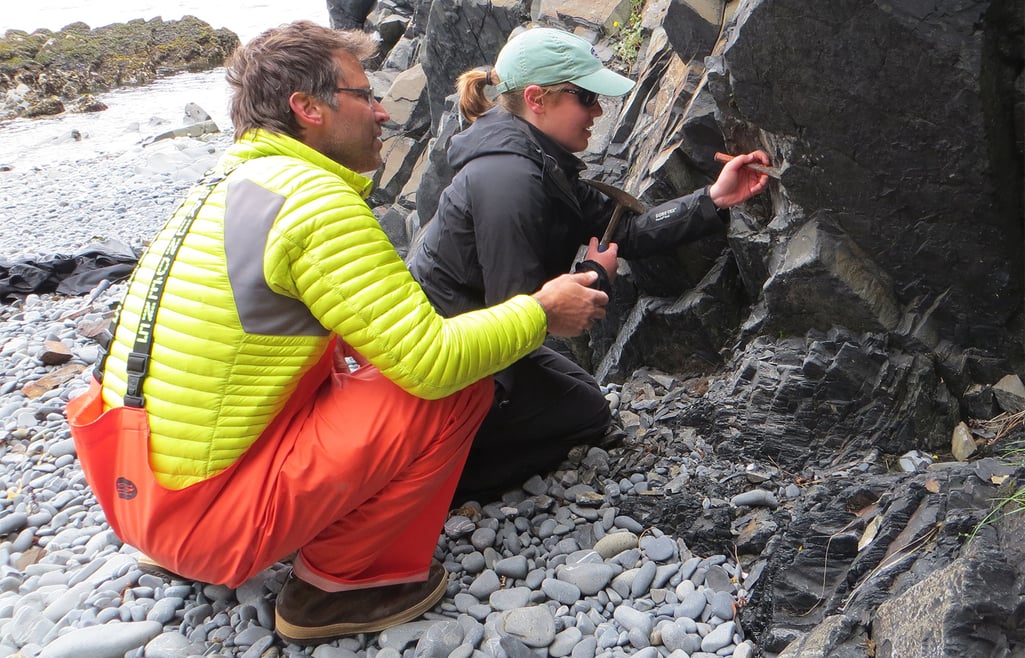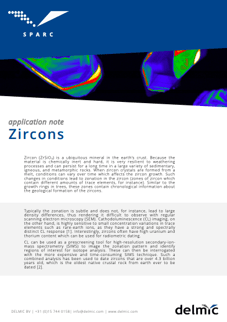-
Life Sciences
.png)
Our solutions
-
Materials Analysis
.png)
Our solutions
Techniques
Applications
- Why Delmic?
-
Insights
.png)
Insights
-
Company
.png)
Company
Geology
Dating zircons with cathodoluminescence

Prof. Cameron Davidson is currently working at the Department of Geology, Carleton College. His research focuses currently on the provenance and translation history of the Chugach-Prince William terrane in Alaska.
One of the primary tools his group uses to unravel the geologic history of these rocks is detrital zircon geochronology which involves U-Pb dating 300-600 zircons collected from a single sedimentary rock sample. The resulting age distribution of a sample helps constrain the nature of the source region from which it was derived and can be used like a “bar code” to help correlate between samples. His work thus far suggests that much of the southern Alaskan margin was deposited at much lower latitudes, perhaps as far south as Southern California, and then transported to Alaska between 70 and 40 million years ago.
The mineral zircon (ZrSiO4) is the workhorse for U-Pb geochronolgy and is an excellent cathodoluminescence (CL) emitter when excited by an electron beam. Zircon is also quite robust and tends to persist in the geologic record once it forms. Therefore, zircons can record multiple zircon forming events that have occurred over geologic time and are expressed as distinct zones that show up in CL. Therefore, CL images are used to target the different zones of interest with a laser and ablate 10-20 µm size pits to date zircons.
For their CL experiments, Prof. Davidson uses the SPARC Compact system. When choosing among different cathodoluminescence systems, Prof. Davidson mentions that they particularly liked the idea that they could add different modules, like spectroscopy, if the need arose.
The images have exceeded our expectations and the acquisition time is remarkably fast compared to CL systems I have used in the past. The large area mapping and stitching capabilities of the Delmic software is phenomenal. We make large area maps of our grain mounts that contain over a thousand zircons. We typically collect around 160 images for a single grain mount and it is nearly impossible to find the seams in the resulting high-resolution composite image.
Prof. Davidson also acknowledges also Delmic’s service and support.
I used the online form for sending questions two or three times and each time I get a response in less than 24 hours. One question was rather complex, so we set up a Skype meeting, and one of the engineers walked me through a solution in real time by remotely connecting to our system.




